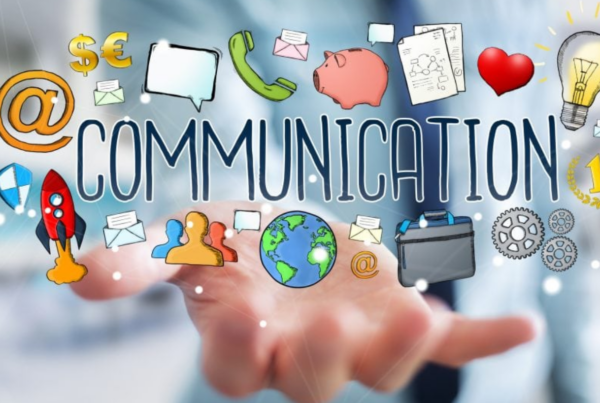
Harmonizing Compliance and Operational Efficiency with Healthcare Automation Solutions
Healthcare requires a lot of paperwork, from forms to letters to patient charts and treatment plans. Since much of the paperwork includes protected health information (PHI), it’s covered by regulations like the Health Insurance Portability and Accountability Act (HIPAA) and must meet security standards for handling and storage.
No doctor ever said they went to medical school so they could fill out forms, but that’s what they’re doing: the average doctor spends 15.5 hours each week on paperwork. This bottleneck can directly impact their ability to provide exceptional patient care.
Compliance is a Key Element of Healthcare Quality and Safety
Compliance programs protect patient information, keep personal data safe, and help healthcare professionals provide quality patient care. You must meet HIPAA regulatory guidelines, adhere to privacy and security standards, and maintain accurate documentation. The consequences of non-compliance are possible security breaches, fines, lawsuits, loss of productivity, reputational damage, and possible loss of medical license.
Compliance is also a Key Detractor of Healthcare Efficiency
Compliance is essential, but achieving and maintaining compliance can be a complex and time-consuming process. Compliance requires paperwork — a lot of paperwork — and with ever-changing regulations, you may find yourself struggling to keep up.
Even though it’s there to protect patients, compliance can drain efficiency from healthcare. The traditional manual approach to compliance involves extensive documentation and repetitive tasks, creating a need for more streamlined processes. The highly manual nature of patient communications and healthcare paperwork leads to operational inefficiency. Filling out all these forms manually is not only inefficient but also error-prone, making it unsustainable.
These manual processes slow down operations while increasing the risk of errors and delays, causing you to spend more valuable time on administrative tasks that could be better spent on patient care.
Moreover, the manual handling and storage of documents can lead to misplaced or lost files, further hampering efficiency. Retrieving information quickly when needed becomes a challenge, which can cause delays in decision-making and potentially compromise patient care, with possibly severe consequences.
Gain Compliance and Efficiency with Healthcare Automation Solutions
Healthcare regulations may be complex, but you don’t have to trade off healthcare efficiency to maintain compliance. Use healthcare automation solutions to cut down on time-consuming and error-prone manual paperwork and data entry, which increases both efficiency and compliance at the same time.
Healthcare automation solutions such as S-Docs help you streamline workflows, save time, and increase productivity. At the same time, S-Docs gives you the compliance benefits of the Salesforce customer relationship management (CRM) platform as a native document automation solution, ensuring adherence to strict regulations and never processing data outside of the already-approved Salesforce platform.
The added efficiency you get from healthcare communications technology translates into cost savings, automating routine tasks like healthcare paperwork so professionals can focus on what matters most — providing quality care to patients.
Benefits of S-Docs for Healthcare Efficiency and Compliance
By providing a versatile solution for healthcare paperwork, S-Docs offers several ways to make healthcare and compliance paperwork easier and more efficient.
Creates repeatable processes aligned with business rules. S-Docs makes it easy to create standardized and repeatable document processes that align with specific business rules and compliance requirements, so that patients always get the right documents they need. This healthcare automation solution has customizable templates to ensure that all necessary information is included, eliminating the risk of missing or incomplete documentation and ensuring consistency and accuracy across the board.
Reduces human error. Even the most meticulous healthcare professionals can make mistakes when handling documents manually, leading to compromised compliance and operational inefficiencies. S-Docs reduces the risk of human error by automating data capture, document generation, and distribution. Pulling data from a single source of truth helps avoid costly mistakes that could lead to bad patient experiences, time lost, and compliance issues.
Assures content completeness. Accurate and complete documentation is crucial for compliance. The S-Docs healthcare automation solution ensures content completeness with features such as mandatory fields, validation rules, and automated data population. This guarantees documents always have the required information, improving compliance and the overall quality and reliability of healthcare documentation.
Controls access. S-Docs meets the federal IT compliance regulations of HIPAAand is 100% native to Salesforce, automatically complying with Salesforce’s security requirements. S-Docs’ robust access controls let you define user roles, permissions, and document access levels to employ the principle of least privilege and only allow pre-approved users to access, edit, generate, or distribute documents.
Retains and stores documents automatically. Avoid errors by using S-Docs to automatically retain and securely store documents. This saves physical storage space and facilitates quick and easy information retrieval so you can access documents instantly, improving decision-making and enhancing patient care.
Ensures security. Prioritize security with S-Docs. Native to Salesforce, S-Docs never sends data outside of the HIPAA-compliant platform you’ve already approved. This secure data handling ensures that sensitive patient information is protected from unauthorized access, breaches, and tampering.
Document Automation Improves Efficiency and Compliance
Manual processes and paperwork hinder efficiency and increase the risk of errors. Overcome these challenges and harmonize compliance and operational efficiency with healthcare communications technology from S-Docs.
Document automation eliminates tedious manual work while ensuring compliance and security. By automating document processes, you reduce human errors, ensure content completeness, control access, and improve document retention and security. S-Docs helps you maintain compliance while optimizing efficiency.
Request a demo of S-Docs today and experience the benefits of healthcare automation solutions firsthand.
Enjoying our blog?
Subscribe now and we'll make sure to send you the latest as we publish new content!
Connect With Us!
For Salesforce news, digital document & e-signature insights, or just for fun.
Read More

Transforming the Federal Employee Experience with Salesforce and Government Digital Transformation















